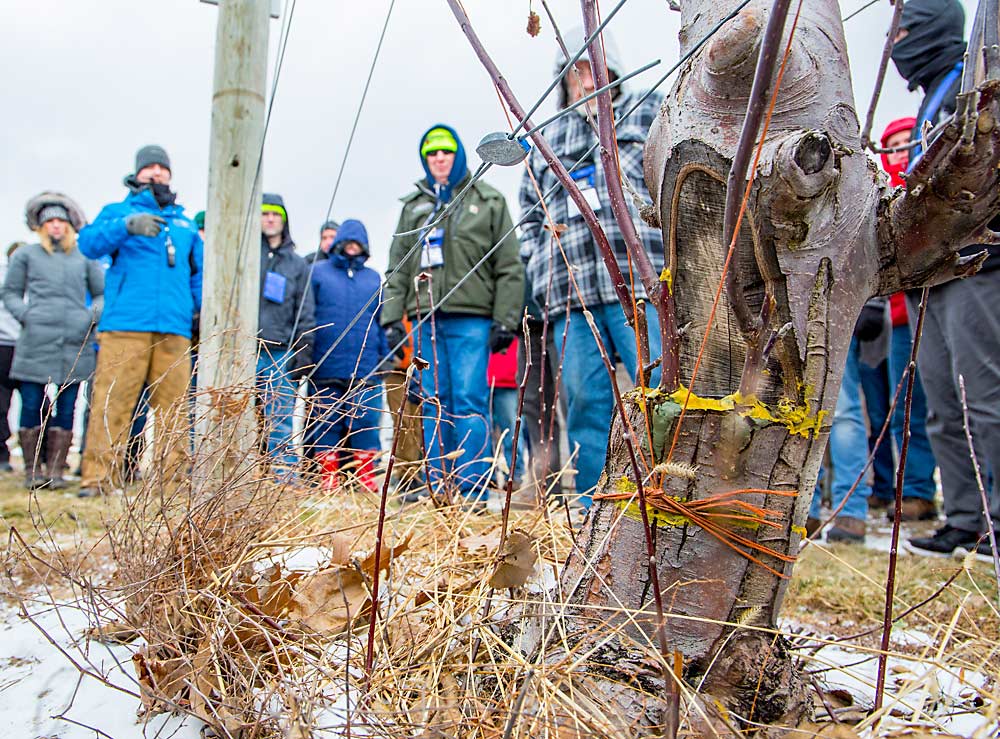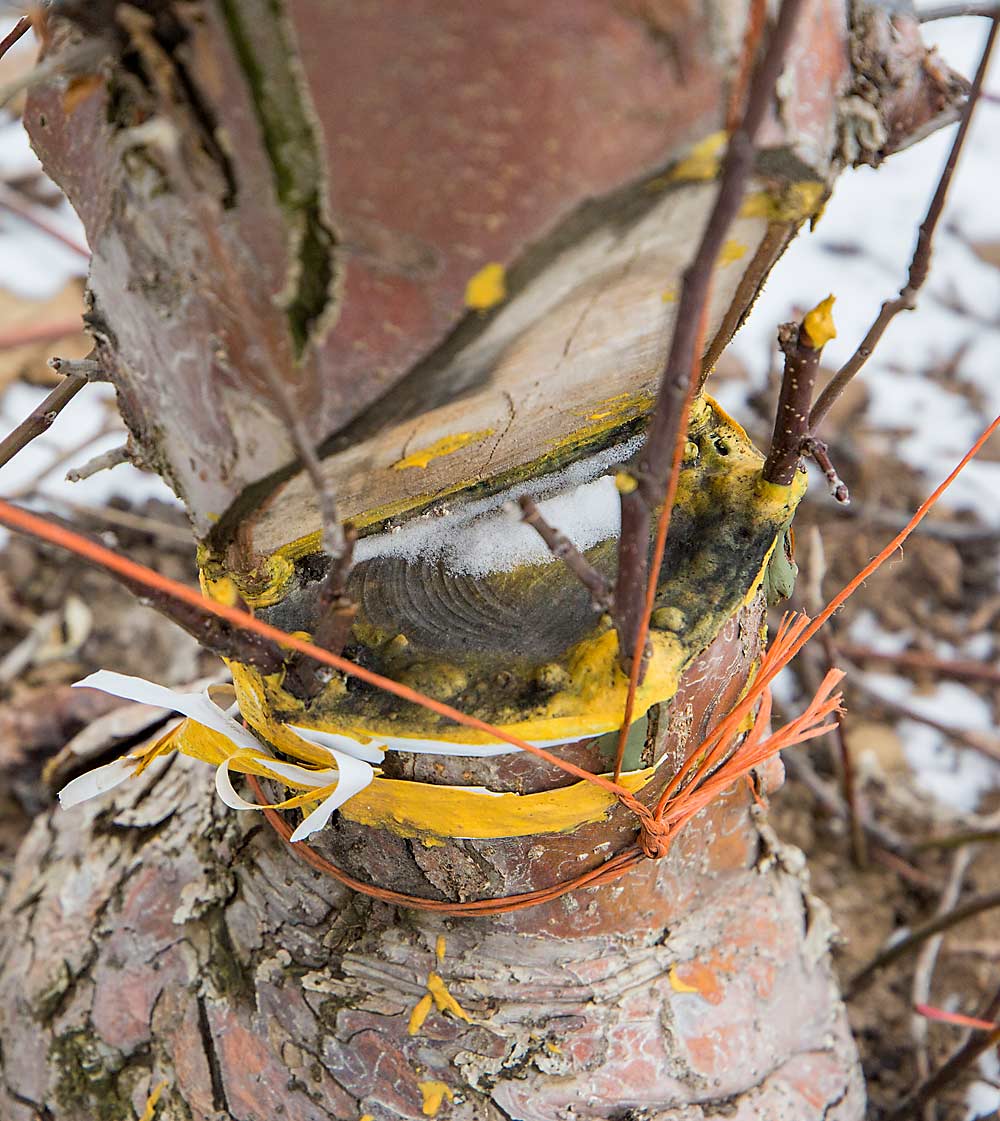
In a spacious apple block on roots planted nearly 30 years ago, grower Robert Brown III is trying something new. He acknowledges it looks kind of strange, as if chain saw-wielding workers started to cut down every single tree but changed their minds halfway through each one.
Brown, managing partner of Orchard Dale Fruit Co. near Rochester, New York, is experimenting with beaver grafts, notching deep into established trunks and grafting Honeycrisp scion wood into the exposed bench, as a middle-of-the-road way to change out his outdated Jonagold cultivars.
“We didn’t need the variety and didn’t want to rip this out,” Brown told growers visiting his farm during the tour portion of February’s annual meeting of the International Fruit Tree Association in Rochester. The technique made an impression and became one of the surprise hot topics.
“I had neither seen nor heard of them before in my entire life,” said Sarah Lott Zost of Bonnie Brae Fruit Farms of Gardners, Pennsylvania, sharing some of the most interesting portions of the conference during a panel discussion. “That was completely unique to me.”
Brown is using the technique in several places, after learning about it during a previous IFTA presentation about New Zealand.
However, he showed February’s IFTA tour a 2-acre block with Malling 9 rootstocks planted 13 feet by 6 feet. The goal: train the new scion into triple-leader trees to create a high-density block of roughly 1,600 to 1,700 leaders per acre.
Once the new branches are healthy and strong, his crews will cut off the rest of the trunk above the graft union and graft branches to the other side of the bench, creating triple leaders on each side for a total of six overall.
The technique accomplishes the same purpose as leaving a thick nurse limb above a graft to absorb some of the tree’s energy while the new scion establishes itself. In his case, though, the existing limbs were about 4 feet off the ground, too high to use as nurse limbs with a traditional graft, he said. The beaver graft provided a better starting position for multileader production.
In spite of some challenges, including winter damage, he’s had pretty good luck with the beaver grafts so far, he said.

He recommended using the technique on thicker trunks and keeping the west side of the tree competition-free to let in plenty of sunlight. On big stumps with a lot of horsepower, don’t push the new grafts too hard in the fall, to ensure they go dormant by winter. His first year, his trees suffered some winter damage. He may employ copper sprays to induce dormancy this year, he said.
Creating the grafts took less time and work than he expected. In May, crews of four working together — some with chain saws to make the bench, followed by a grafter and then someone to paint and tape — covered eight rows a day. To apply herbicides for weeds, they used a hooded sprayer.
Overall, he recommended patience while the grafts take, and to be sure to keep the established half of the tree healthy while you wait.
“You got to make sure you’re keeping everything alive when you’re doing this,” he said.
Brown led the charge, but other Western New York growers are experimenting with beaver grafts now, said Mario Miranda Sazo, horticulturist for Cornell University Cooperative Extension’s Lake Ontario Fruit Program. He knows of three who made the graft in 2018, and two more with the same plans this year.
Miranda Sazo and growers are still working out best practices, especially regarding when to cut off the second half of the trunk.
Brown first tried beaver grafts in spring 2017 and cut the trunks in April and May the following year. In some cases, the trees pushed too hard and the grafts failed.
This time around, they plan to wait until the end of the second year to remove the rest of the trunk. Thus, some of his trees grafted in spring 2018 won’t lose the second half of their trunks until May 2020, a full two years after the graft.
Also, Brown experienced some cold injury the year after his first beaver graft; he and Miranda Sazo aren’t sure whether that’s related to the beaver grafts.
Meanwhile, they are unsure if the technique makes economic sense overall. It can help a grower get into production quickly after changing varieties but may lock them into a sparse density in spite of the extra costs involved with a multileader system, such as trellises and drip irrigation.
“There is still a lot to learn for the beaver graft technique to be a complete success,” Miranda Sazo said. “It is an ongoing project and we will learn a lot more in 2019.” •
—by Ross Courtney






Leave A Comment